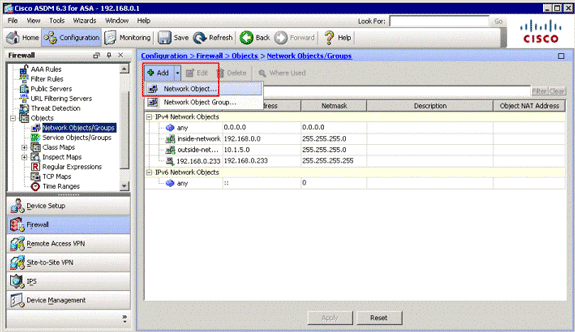


Syslog Because of No Connection, and Non-SYN Packet:ASA-6-106015: Deny TCP (no connection) from 10.1.1.9/11031 to 198.133.219.25/80 flags PSH ACK on interface insideįirst packet in flow is processed through interface ACLs ACLs are first match First packet in flow matches ACE, incrementing hit count by one Denied packets are dropped and loggedPacket Permitted by ACL:ASA-5540B# show access-list inside access-list inside line 10 permit ip 10.1.1.0 255.255.255.0 any (hitcnt=1)
#CLEARING XLATE ON CISCO ASDM 5.2 FULL#
bytes, BW 1 Gbit full duplex 5912749 packets input, 377701207 bytes, 0 no buffer Received 29519 broadcasts, 0 runts, 0 giants 0 input errors, 0 CRC, 0 frame, 0 overrun, 0 ignored, 0 abort 286298 packets output, 18326033 bytes, 0 underruns input queue (curr/max blocks): hardware (0/25) software (0/0) output queue (curr/max blocks): hardware (0/3) software (0/0)Ĭheck first for existing connection If connection exists, flow is matched bypass ACL check If no existing connection TCP non-SYN packet, drop and log TCP SYN or UDP packet, pass to ACL checks Established Connection:ASA-5540# show conn TCP out 198.133.219.25:80 in 10.1.1.9:11030 idle 0:00:04 Bytes 1293 flags UIO Packet arrives on ingress interface Input counters incremented Software input queue is an indicator of load No buffers indicates packet drops, typically due to bursty trafficĪSA-5540# show interface gb-ethernet1 interface gb-ethernet1 "inside" is up, line protocol is up Hardware is i82543 rev02 gigabit ethernet, address is 0003.470d.6214 IP address 10.1.1.1, subnet mask 255.255.255. Packet Processing Flow Diagram The diagram below will be referenced on the following slides it is shown here enlarged for reference Understanding the Packet Flow Once the device and flow have been identified, walk the path of the packet through the device The packet path through the firewall is illustrated in the next several slides For troubleshooting, pay careful attention to where the packet can be dropped in the decision-making process With the Flow Defined, Examination of Configuration Issues Boils Down to Just the Two Interfaces: Inside and Outside Interfaces Source: Inside Destination: OutsideĪccounting Outside Server: 198.133.219.25 Note: All firewall issues can be simplified to two interfaces (ingress and egress) and the rules tied to bothĮxample Flow Flow SRC IP: 10.1.1.9 SRC Port: 11030 Protocol: TCP DST IP: 198.133.219.25 DST Port: 80 Understanding the Packet Flow To effectively troubleshoot a problem, one must first understand the packet path through the network Attempt to isolate the problem down to a single device Then perform a systematic walk of the packet path through the device to determine where the problem could be For problems relating to the Cisco ASA/PIX/FWSM, always Determine the flow: SRC IP, DST IP, SRC port, DST port, and protocol Determine the interfaces through which the flow passes


Troubleshooting FirewallsEric Stuhl Senior Network Consultant Chesapeake NetCraftsmen 2005Īgenda Packet Flow Understanding the Architecture Failover Troubleshooting Case Studies Tools Best Practices


 0 kommentar(er)
0 kommentar(er)
